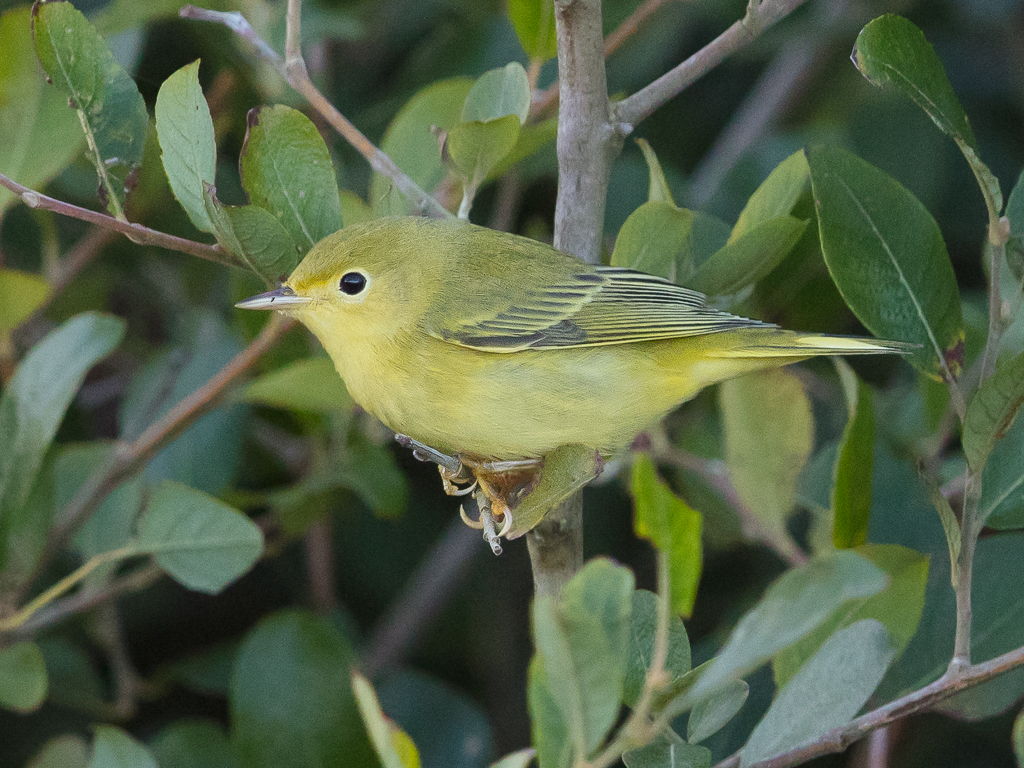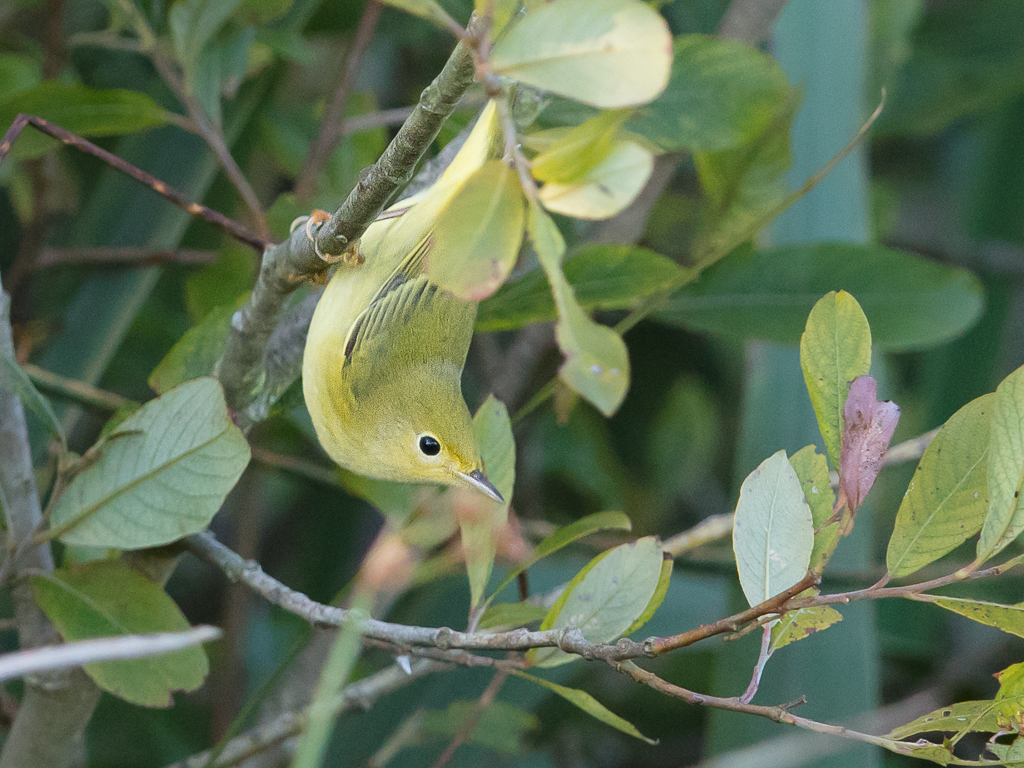Firstly, I’d like to thank the National Grid for a power cut and my mother-in-law for showing up at my house while I had no TV to distract me from her customary woes of the day – a drive out to Portland Bird Observatory suddenly seemed like a very attractive proposition, despite having been relatively migrant free earlier in the day.
On arrival I was greeted by obs warden Martin Cade, who reported that it was still quiet and that he was off out to mow some net-rides in the nearby Crown Estate field. I decided to give Culverwell a look and was immediately encouraged when a Sedge Warbler responded to my pishing; a second bout of pishing saw a Willow Warbler surface from the sallows, before another bird appeared with its back to me. The whole impression was of brightness and was enough to get the brain racing – certainly a “What the ****!” moment. Another frustratingly brief glimpse revealed yellow undertail coverts and pale-fringed primaries, but nothing by way of an unobstructed view of the whole bird.
Panic and excitement set in. I knew this was most likely something good and thoughts of the American Yellow Warbler that had been reported in Ireland that morning sprang to mind. Without a phone signal I was unable to summon help, and besides, I hadn’t even seen its head. I took the decision to return to the obs and get help. On the way back, thoughts were running through my head: ‘Am I stuffing up? Could it be something freaky like a xanthistic Willow Warbler?’ A quick check of the field guide revealed there was nothing wrong in what I’d seen for it to be American Yellow Warbler. With panic rising by the minute, I went in search of Martin and, being on crutches, I was so exhausted by the time I found him that I was only able to blurt out that I’d found a warbler and that it looked amazingly yellow.
In haste, we drove to Culverwell, but further pishing drew a blank; after a while, though, a couple of unfamiliar chipping calls were heard that reminded me of a call I’d heard when I first encountered the bird. To follow these, Martin moved into an old net-ride through the sallow clump and after 10 minutes there was a sudden arresting shout: “It’s here looking down at me – it’s an American Yellow Warbler!” Punching the air, I just about managed a little ‘dance’ on my crutches. The bird quickly vanished back into cover but, on moving into the net-ride, it wasn’t long before I too was treated to my first view of the entire bird when it popped out right in front of me.

The bird could look bright even in the low evening light, but positively glowed in the afternoon sunshine when Duncan first found it (Chris Griffin).
Once the euphoria died down we began to realise both the enormity of the situation and the need to get into general circulation news of what was not only a first for Dorset but also first for mainland Britain. The lack of a phone signal meant Martin had to return to the obs, but it wasn’t long before the first local birders came rushing to the scene. For a few hours the bird proved frustratingly difficult to get to grips with: it was clearly quite active, mobile and occasionally vocal but largely stayed within the sallow clump and only rarely afforded more than tantalising glimpses in the open or brief flight views; towards dusk it became more vocal and visible, even flycatching at times from the tree tops, although by this time the views in relatively poor light imparted the impression of a bird with subdued plumage tones and perhaps didn’t convey to the gathering crowd quite how vividly bright it had looked in sunshine during the afternoon.
Views of the American Yellow Warbler were often obscured as it moved around the sallows, although it performed well for a time in the evening. Video: Martin Cade.
Surprisingly, considering the bird almost certainly arrived overnight or earlier in the day in the wake of the remains of Hurricane Gert and might have been expected to make a longer recuperative stay, this late flurry of activity proved to be the precursor to it moving on and it could not be found the next day. It’s estimated that at least 200 birders connected in the few hours that the bird was available.

American Yellow Warbler, Portland, Dorset, 21 August 2017 (Tim White).



